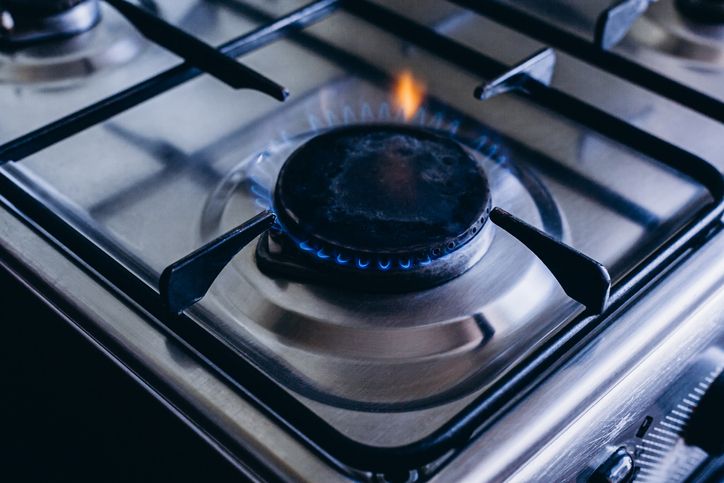Is your gas stove causing health problems?
Short answer: Yes, it can. Multiple studies over many years have documented the health complications of indoor gas stove exposure. Gas stoves release dangerous levels of harmful chemicals into your home whether they are turned on or not. But to be fair, all cooking devices release these volatile organic compounds (VOCs) into the air. VOCs cause chronic upper respiratory disease, cardiovascular issues and exacerbate asthma. This is why all kitchens should be well ventilated.
There are many other sources of VOCs in your home such as paints, synthetic fibers in carpets and furniture, scented candles, and air fresheners. The kitchen, especially a gas stove, is by far the worst culprit in levels.
Stoves release the harmful VOC or chemical PM2.5 (particulate matter), but gas stoves release double the amount of electric ones. Gas stoves also release formaldehyde, carbon monoxide (CO), and nitrogen oxides (NO2).
Carbon monoxide: In homes without gas stoves, CO levels are 0.5 to 5 ppm. But in homes with gas stoves, the CO level is 5-15 ppm and if poorly ventilated it is twice that. CO exposure can make a cardiovascular illness worse.
Nitrogen Oxides: NO2 causes cognitive delays, mental health issues and asthma in children. Long-term exposure leads to cancer, cardiac disease, diabetes and poor birth outcomes. NO2 levels are 50-400% higher in homes with gas stoves as compared to electric per Environmental Protection Agency (EPA) studies. NO2 levels in homes cooking with gas stoves ranged from 100 to 550 ppm. Just for context, the outdoor recommended max 1- hour exposure in the United States is 100 ppm. The recommended limit in Canada is 60 ppm. I think this makes the need for ventilation eye-widening clear!
The effects of gas stoves on children is more pronounced
Children in homes with a gas stove have over 32% increased lifetime and current asthma risk. This can be exacerbated in lower-income households with poor ventilation and more people using their gas stoves for heat.
Gas stoves are the only indoor gas appliance with no venting requirements in the U.S. Although, we are advancing our products, including gas stoves, to release fewer VOCs.
So what does this mean for RVs and Boats/Yachts?
This topic could be studied more as a lot of people are transitioning to working from home. This new work model is enabling people to work while on the road or water in their new to them mobile living quarters. A high percentage of this new way of living has gas stoves. Unless you have a super yacht I am going to bet your space is much smaller than a traditional home. Most boats do not have exhaust fans set up so you are in an even more VOC-concentrated environment. It is even more imperative to address the levels of gas stove emissions in smaller, nontraditional living spaces. The next section will address some solutions to cleaner air in your home no matter the type of living space you have chosen.
Ways to minimize VOC exposure from your gas stove:
If propane, turn off the gas source after each use while it is still lit. This will burn off any gas left in the system. Studies have shown that gas stoves still emit VOCs when not being used due to the gas left in the lines. Just don’t forget to turn your stove off once you see the flame go out!
While it is easy to turn off the source in RVs and boats, it’s not so easy in a traditional home.
Here are other recommendations:
- Ventilation/exhaust fan
- Open a window-any window or door or multiple ones. You need at least 2 open sources for flow out of the area.
- Turn on a ventilation fan even in a bathroom located nearby
- Use a fan to push air outdoors
- If your upper respiratory airway becomes irritated while cooking get more ventilation and consider a different source of cooking and get away from this irritant
- If you like your gas stove but it is older, consider upgrading to a new model that may release fewer VOCs. Look for appliances that have a VOC emission rating.
- Solar cooking! It is easy, fun and avoids VOCs indoors. Plus you are no longer heating your living space in the middle of a hot summer!
- Switch to electric such as induction cooktops, toaster ovens and hot plates. This may mean more batteries or solar but in the end, it may be a life-saver.
If you have a gas appliance, especially if you are in a small living space, and notice you or your household has increased health issues, I would re-assess your situation. While a little eye tearing or runny nose while you are cooking may seem trivial it can have serious long-term effects such as mental acuity and cardiac. Listen to your body!
